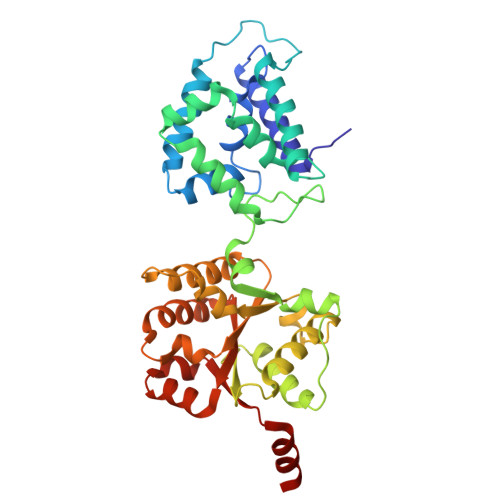Overlapping and Specific Functions of the Hsp104 N Domain Define Its Role in Protein Disaggregation.
Lee, J., Sung, N., Mercado, J.M., Hryc, C.F., Chang, C., Lee, S., Tsai, F.T.F.(2017) Sci Rep 7: 11184-11184
- PubMed: 28894176
- DOI: https://doi.org/10.1038/s41598-017-11474-9
- Primary Citation of Related Structures:
6AMN - PubMed Abstract:
Hsp104 is a ring-forming protein disaggregase that rescues stress-damaged proteins from an aggregated state. To facilitate protein disaggregation, Hsp104 cooperates with Hsp70 and Hsp40 chaperones (Hsp70/40) to form a bi-chaperone system. How Hsp104 recognizes its substrates, particularly the importance of the N domain, remains poorly understood and multiple, seemingly conflicting mechanisms have been proposed. Although the N domain is dispensable for protein disaggregation, it is sensitive to point mutations that abolish the function of the bacterial Hsp104 homolog in vitro, and is essential for curing yeast prions by Hsp104 overexpression in vivo. Here, we present the crystal structure of an N-terminal fragment of Saccharomyces cerevisiae Hsp104 with the N domain of one molecule bound to the C-terminal helix of the neighboring D1 domain. Consistent with mimicking substrate interaction, mutating the putative substrate-binding site in a constitutively active Hsp104 variant impairs the recovery of functional protein from aggregates. We find that the observed substrate-binding defect can be rescued by Hsp70/40 chaperones, providing a molecular explanation as to why the N domain is dispensable for protein disaggregation when Hsp70/40 is present, yet essential for the dissolution of Hsp104-specific substrates, such as yeast prions, which likely depends on a direct N domain interaction.
Organizational Affiliation:
Verna and Marrs McLean Department of Biochemistry and Molecular Biology, Baylor College of Medicine, One Baylor Plaza, Houston, TX, 77030, USA.














